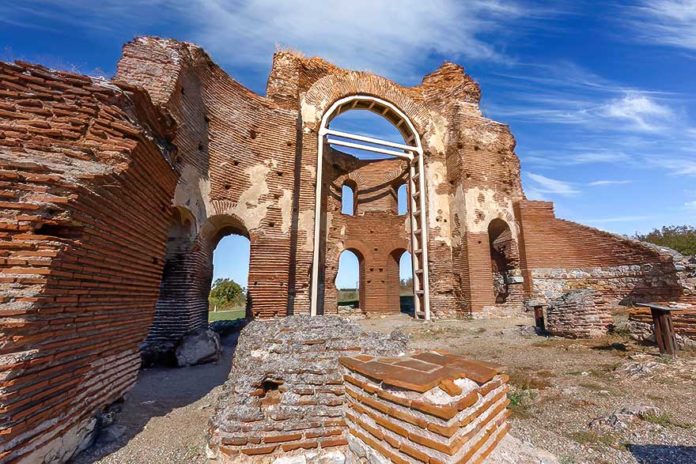The Red Church, located near Plovdiv (ancient Philippopolis) in modern-day Bulgaria, is one of the significant early Christian structures known for its architectural and historical value.
Historic Roots
Built between the 4th and early 6th centuries under Emperor Anastasius I, The Red Church is a marvel of Roman engineering. Originally serving Rome’s legionnaires, it housed thermal baths and became a significant religious site.
Early Worship and Mithraism
The site honored Mithras, the Iranian deity. It initially featured a north altar above Roman baths and a Mithraeum. Once part of the baths, its pool became the church’s baptistery, embodying early Christian rites alongside Mithraic traditions.
Mithraic and Christian Intersections
A unique fountain under the church, inspired by Mithras legend, symbolizes life-giving forces. Despite Christian dominance, a mural of Mithras emerging from a red egg persisted, marking religious coexistence.
Pillar of Faith in Europe
An Ancient European Church
After the 343 Ecumenical Council in Serdica, Thrace witnessed the rise of cult buildings like The Red Church, which memorialized Christian martyrs. Strategically located near Philippopolis (modern Plovdiv), it bridged vital ancient routes.
The Ecumenical Council of Serdica
The Council of Serdica, also known as the Synod of Serdica, took place in 343 AD in the city of Serdica (modern Sofia, Bulgaria). It was an attempt by the Christian Church to settle the Arian controversy, which was a theological dispute that divided the Christian community. The council was convened by the joint emperors Constantius II (Eastern Roman Empire) and Constans I (Western Roman Empire). The council aimed to reconcile the differences between the Arian and Nicene factions within the church. However, the council did not achieve its intended purpose. Instead of bridging the divisions, it ended in a schism, with the Eastern and Western bishops failing to reconcile their differences. The Eastern bishops even refused to meet with their Western counterparts. This led to the departure of the Eastern contingent to Philippopolis, which further entrenched the divide within the Christian Church.
The Construction of the Red Church
The construction of early Christian buildings, including The Red Church, was influenced by various factors, including the official acceptance of Christianity within the Roman Empire, the religious policies of the reigning emperors, and local devotion to Christian martyrs. The spread of Christianity and the construction of religious buildings were part of a broader process of Christianization that took place over several centuries, influenced by multiple councils, imperial decrees, and local religious practices.
Evolution of Sacred Space
Initially a martyrium, The Red Church became a Byzantine noble retreat adorned with preserved frescoes. It’s celebrated for the healing legacy of a Christian martyr who dedicated it to the Holy Virgin.
Architectural Signature
Named for its distinctive Roman bricks and pink mortar, The Red Church is a testament to Rome’s architectural and spiritual legacy.



